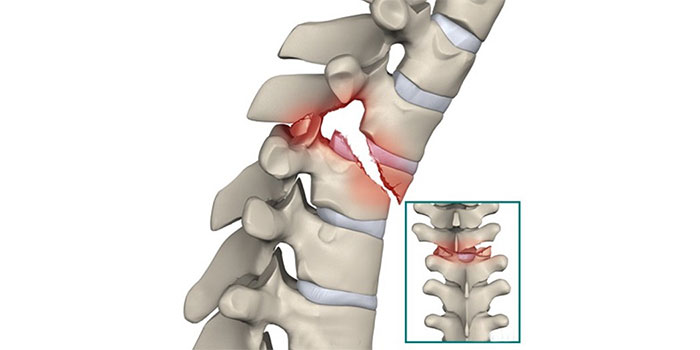
Even minor falls or trauma can produce a spine fracture. Many of these injuries will never require surgery, but major fractures can result in serious long-term problems unless treated promptly and properly. Spine fractures range from painful compression fractures, often seen after minor trauma in osteoporotic patients, to more severe injuries such as burst fractures and fracture-dislocations that occur following auto accidents or falls from height. These severe injuries frequently result in spinal instability, with a high risk of spinal cord injury and pain.
Osteoporosis, or weakening of the bones, can lead to painful vertebral compression fractures. Until recently the only treatment was bracing and narcotic medications which frequently lead to ongoing pain and progressive deformity. The spinal surgeons at Cleveland Clinic Center for Spine Health can now, using a new technology, re-expand the vertebral body (kyphoplasty) and augment its strength by injecting bone cement. This can be done as an outpatient in a minimally invasive fashion. In other cases cement injection without re-expansion of the fracture (vertebroplasty) can be performed.
When an external force is applied to the spine, such as from a fall, the forces may exceed the ability of the bone within the vertebral column to support the load. This may cause the front part of the vertebral body to crush, resulting in a compression fracture. If the entire vertebral column breaks, it results in a burst fracture.
If the compression is mild, you will experience only mild pain and minimal deformity. If the compression is severe, affecting the spinal cord or nerve roots, you will experience severe pain and a hunched forward deformity (kyphosis).
Osteoporosis is the most common risk factor for fractures, as the disease causes bones to weaken.
Medical Treatment: Most fractures are treated with immobilization in a brace or corset for up to 12 weeks. Bracing helps to reduce pain and prevent deformity.
Surgical Treatment: Severe cases may require surgery.
Vertebroplasty is a new surgical procedure that may be used to treat compression fractures. In this procedure, the surgeon inserts a catheter into the compressed vertebra. The catheter is used to inject the fractured vertebrae with bone cement, which hardens, stabilizing the vertebral column. This procedure has been shown to reduce or eliminate fracture pain, enabling a rapid return to mobility and preventing bone loss due to bed rest. However, it does not correct the spinal deformity.
Kyphoplasty involves inserting a tube into the vertebral column under X-ray guidance, followed by the insertion of an inflatable bone tamp. A tiny incision is made in the back. Once inflated, the tamp restores the vertebral body back toward its original height, while creating a cavity to be filled with bone cement. The cement seals off cracks and cavities, and prevents the vertebra from re-collapsing. After the cavity is filled, the tube is removed and the incision stitched. Since August 1998, hundreds patients have been treated at The Cleveland Clinic with kyphoplasty.
Stabilization can also be achieved by removing broken vertebra and replacing them with a plate, screws, or cage.
Copyright © All Rights Reserved, By Shethna Spine Clinic